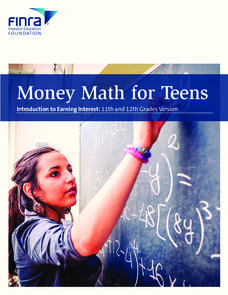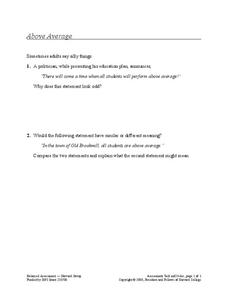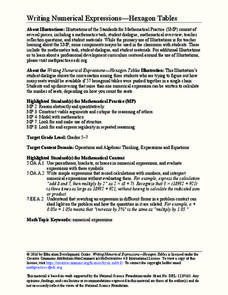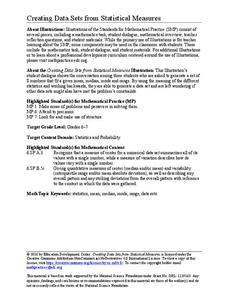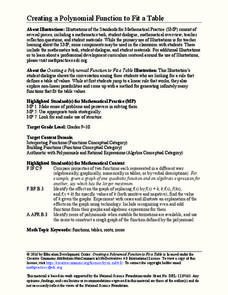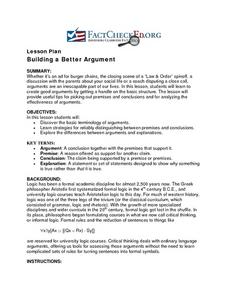Federal Reserve Bank
The Great Inflation: A Historical Overview and Lessons Learned
Your young economists will explore the roots of fears about high inflation by learning the effects of rising prices during the world wars and in particular the Great Inflation of the 1970s.
SaveandInvest.org
Introduction to Earning Interest: Grades 9-10
Does your bank pay you for allowing them to hold your money? The lesson covers three different ways your money can make money. Topics include certificates of deposit, statement savings accounts, and money market accounts.
SaveandInvest.org
Introduction to Earning Interest: Grades 11-12
Does your bank pay you for allowing them to hold your money? Class members investigate three different ways money can make more money. Topics include certificates of deposit, statement savings accounts, and money market accounts....
Read Works
First Thanksgiving Meal
Cranberries, oysters, lobster, deer, and cabbage were just a few of the foods found on the table at the First Thanksgiving. After reading a two-page passage about the historic meal, class members respond to 10 reading...
Balanced Assessment
Sloppy Student I
"Does this work every time?" We've all heard it. Now learners get to explore methods to answer that question themselves. Pupils analyze a mistake that has been made with creating a formula for multiplying binomials. They then create...
NPR
Chinese American Women Lesson Plan
The National Women's History Museum provides a plan designed to accompany their online CyberExhibit, Chinese American Women; a History of Resilience and Resistance. After examining a series of primary and secondary source documents,...
Media Smarts
Thinking About Television and Movies
As part of their study of the influence of TV and films, class members consider how music, lighting, costumes, camera angles, etc. are used to influence the response of viewers.
K12 Reader
Abraham Lincoln Bio Poem
Everyone knows about Abraham Lincoln as a historical figure, but what was he like as a person? Young historians complete a biopoem about Lincoln, including his character traits, his relationships, his fears, and his needs.
Balanced Assessment
Above Average
Raise the bar and strive to be above average. The assessment task requires budding mathematicians to think critically and evaluate given statements. What does it truly mean to be above average?
LABScI
Conservation of Momentum: Marble Collisions
What happens to the momentum of an object when it strikes another object? Scholars roll a marble down a ramp so it collides with another marble. By measuring the speed of each marble before and after the collision, pupils answer this...
Education Development Center
Writing Numerical Expressions—Hexagon Tables
Explore a basic pattern to practice writing expressions. In collaborative groups, learners examine a contextual pattern and write an expression to model it. The task encourages groups to describe the pattern in multiple ways.
Education Development Center
Creating Data Sets from Statistical Measures
Explore the measures of central tendency through a challenging task. Given values for the mean, median, mode, and range, collaborative groups create a set of data that would produce those values. They then critique other answers and...
Education Development Center
Creating a Polynomial Function to Fit a Table
Discover relationships between linear and nonlinear functions. Initially, a set of data seems linear, but upon further exploration, pupils realize the data can model an infinite number of functions. Scholars use multiple representations...
Curated OER
Building a Better Argument
High schoolers identify the major components of arguments. They deconstruct several arguments in order to relate the differences between premises and conclusions. Students review several documents and identify the way arguments can be...
Curated OER
Meet the Neighbors: Planets Around Nearby Stars
Students explain why a transiting planet causes a periodic dimming in the light from its parent star. They determine the radius of a planet, and its orbital distance, by analyzing data and manipulating equations. Students compare the...
Curated OER
Photographs of Lewis Hine: Documentation of Child Labor
Students use the Archival Research Catalog to complete assignments and activities about Lewis Hines and the National Child Labor Committee.
Curated OER
Advanced Electromagnetism and Electromagnetic Induction
For this electromagnetism and electromagnetic induction worksheet, students answer 11 questions using calculus to determine things such as magnetic flux and wave output.
Curated OER
Dear Presidential Diary
Middle schoolers discover how a president spends the day. In this presidential history lesson, students research primary sources in order to write their own diaries for presidents that include suggestions of laws, managing personnel,...
Curated OER
Alphabet Fun
For this alphabet worksheet, students are given a letter of the alphabet. They must write the letter that comes before and after the given letter. Finally, students answer questions about the alphabet. There are 35 questions on this...
Curated OER
The Periodic Table
In this periodic table worksheet, learners complete a paragraph containing facts about the periodic table by filling in 18 terms from a word list.
Curated OER
Creating Laws
Students brainstorm ideas for legislation and present their ideas to the class. They draft a bill and take it through the normal procedures of the Canadian Parliament.
Curated OER
Discovering a Law of Space Physics
Young scholars use data collected by an astronomer to determine the relationship between the time it takes the planet to orbit the sun and the average radius of the planet's orbit around the sun. Students use trial and error to find the...
Curated OER
Economics: Property Rights and the Rule of Law
Students examine the economic value of property rights. In a classroom activity, "You're the Economist," they analyze actual research data from establishing land holding titles in Para, Brazil. They assess several case studies about the...
Curated OER
Order in the Court
Students identify the branches of government, who leads each branch and its responsibilities. They understand the role that John Marshall played in our government system. They research the role of the Supreme Court.


